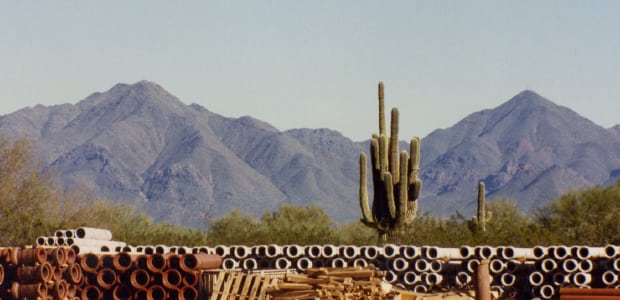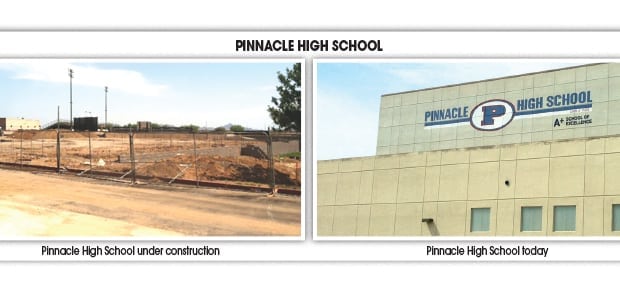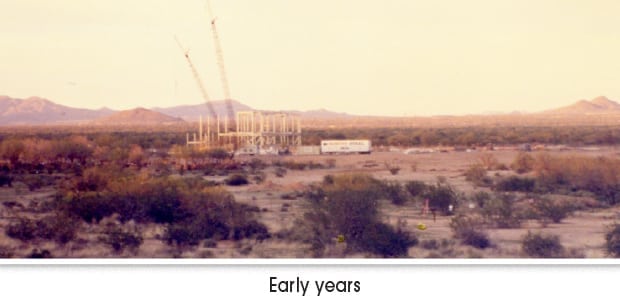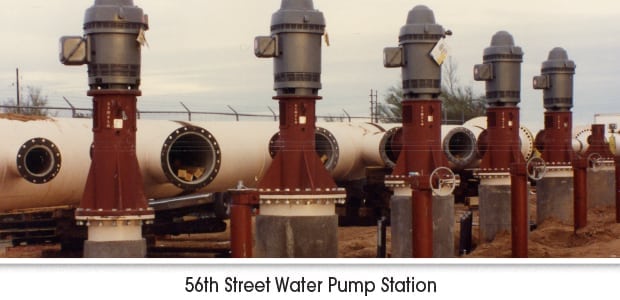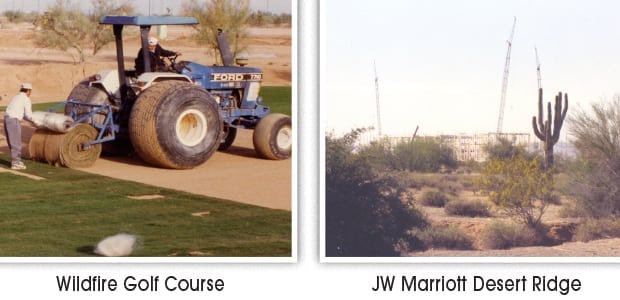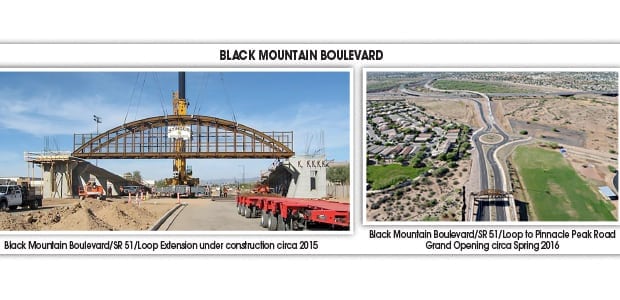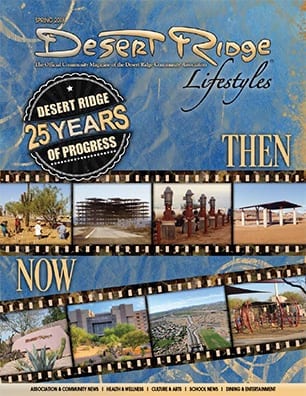25 Years of Progress
By Mike Martin
The Desert Ridge story begins in the late 1980s when the nation was struggling out of a long economic downturn. A local real estate broker came to our office at the Viehmann, Martin Company to pitch a couple of developable sites. Among these was a 5,700-acre tract of state land straddling Tatum Boulevard, north of the CAP Canal. It seemed likely that metropolitan Phoenix would continue to grow northward, no river, mountain or reservation presenting a natural barrier in that direction. With our experience in mall development, my partner Don Viehmann and I thought this location could someday support a major shopping center.
The Arizona Legislature had recently passed the Urban Lands Act, allowing the State Land Department to sell or lease land for development in the state’s two metropolitan areas, Phoenix and Tucson. The 5,700 acres of interest to us was then held by a local family under a lease to graze cattle. Our purchase of that grazing lease gave us rights of first refusal at a land department auction of commercial leases, necessary for the development of a large retail center.
With a long-time friend and business associate, Tom Klutznick, we created an entity that would become Northeast Phoenix Partners (NPP), which would eventually be the master developer of Desert Ridge. But first there was a lot of work to be done. The City of Phoenix was not initially interested in annexing land north of the CAP Canal. However, this position changed when ADOT announced plans for a freeway route, the 101 Loop, through this area.
Northeast Phoenix Partners hired Barton Myers Associates of Santa Barbara, California, to do the basic land use planning for Desert Ridge’s entire parcel. The arterial streets bordering the large superblocks in Desert Ridge followed the natural drainage pattern of stormwater runoff through the site. Each superblock was planned for specific uses: residential, commercial, resort & golf courses.
Desert Ridge was conceived as a cooperative effort by the master developer, the City of Phoenix, and the Arizona State Land Department. The Land Department would continue to own a significant amount of land to be auctioned off in stages over several years. The City of Phoenix would be much involved in the planning and construction of major infrastructure projects. And the master developer would market the various land parcels under its control and guide other development under master planned community’s Covenants, Conditions and Restrictions (CC&Rs) including Design Guidelines for each type of project.
In 1990 the City of Phoenix approved the annexation of Desert Ridge and its Specific Plan, based on the land use plan submitted. Negotiations for the purchase and lease of specific parcels within the plan began in earnest. In July 1993, the Land Department held an auction for the sale of all the residential land in Superblock 7 and a part of Superblock 4. Other auctions were held for long-term leases of a 50-acre resort site, and a 180-acre golf course parcel in Superblock 4. There was also another auction for a long-term lease for the 337-acre Commercial Core, to contain the retail, office, and ancillary uses. Three arterial streets, Tatum Boulevard, Deer Valley Road, and 56th Street, as well as the 101 Freeway bordered the commercial core.
Northeast Phoenix Partners was the successful – and only – bidder for these parcels within Desert Ridge. The next year was spent in refining plans for actual development, along with the marketing of the residential and resort properties. Seven homebuilders committed to acquire subdivision parcels in the first phase.
In 1994 construction began on trunk infrastructure – streets, wash corridors, water and sewer lines – and soon thereafter home builders began working on their super pads and home lots. By Thanksgiving of 1995 the first handful
of homes were occupied in Desert Ridge.
In 1997 the Sumitomo Sitix plant opened, manufacturing silicon wafers for the semiconductor industry. The Mayo Clinic Hospital was completed in 1998 and quickly became one of Arizona’s leading medical facilities.
Negotiations with JW Marriott for the resort and with Vestar for the uniquely designed Desert Ridge Marketplace were concluded in 2000, and construction began on these projects. The Desert Ridge JW Marriott and Desert Ridge Marketplace, both opened for business in 2002, have been extremely successful and major assets for Desert Ridge and surrounding communities.
American Express opened the first phase of its regional office facility in Desert Ridge in 2002. Since then Desert Ridge has continued to attract some of the area’s best home builders, along with more office and retail uses. Desert Ridge’s reputation continues to grow as one Arizona’s finest master planned communities.
